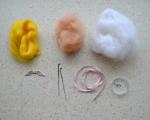Biology test “Blood and circulation. Protective properties of blood. Mechanism of action of the human immune system
Have you ever wondered why one person suffers from poplar fluff? Or why can someone eat absolutely all foods, while others are forced to follow a strict diet?
Immunity
The solution lies in purposeful work immune system our body. The immune system includes lymph nodes, thymus (thymus gland), spleen, red bone marrow. The main function of these organs is to protect the body from external and internal influences. The body's ability to get rid of foreign bodies and compounds (viruses, bacteria, allergens) is called immunity. All foreign substances have a common name - antigens. The immune process is the body’s response to a certain irritation, to the invasion of a foreign agent - an antigen. By looking at the mechanism of how the immune system works, you will be able to understand the causes of allergic reactions and.
Antibody formation and kinetics
Antibody formation occurs in response to the presence of a substance perceived by the immune system as foreign. The foreign entity is generally called an antigen. There are many different antigens that are presented to the immune system. Therefore, there are many antibodies formed.
The formation of countless antibodies follows the same general pattern. First, the immune system distinguishes between host and non-host antigens and reacts only against those that do not belong to the host. An example is rheumatoid arthritis, in which the host's response to self-antigens causes bone deterioration. Another example is heart disease, caused by a host reaction to a heart muscle protein.
There are 2 types of protective cells in the human body: B-lymphocytes and T-lymphocytes. Protecting themselves from antigens, B lymphocytes produce special protein compounds - antibodies, which neutralize antigens by binding to them. T-lymphocytes themselves rush to fight allergens, combine with foreign substances and convert them into an inactive form. Thus collaboration B and T lymphocytes provide protection to our body.
Another feature of antibody formation is that antibody production can occur even when the host has not “seen” a particular antigen for a long time. In other words, the immune system has a memory for an antigenic response. Finally, antibody formation is a very precise reaction. Changing the protein structure only slightly can cause the formation of a different antibody.
The formation of antibodies depends on the processing of incoming antigen. Processing has three phases. The first phase is antigen equilibration between the inner and outer cells. Soluble antigens that can dissolve through cell membranes are able to equilibrate, but bulkier antigens that do not enter solution cannot. The second phase of antigenic processing is known as the catabolic breakdown phase. Here, cells such as macrophages take up the antigen. It is during this phase that the antigen is “presented” to the immune system and an antibody is produced.
Antibodies
Types of antibodies
All antibodies are specific γ-globulin proteins that are formed in the organs of the human immune system, from where they enter the blood and circulate throughout the body. Scientists have described five types of antibodies: IgE (immunoglobulin E), IgA (immunoglobulin A), IgD (immunoglobulin D), IgG and IgM. Antibodies of each type can combine with each other in various combinations, forming specific configurations. As a result, specific antibodies are formed for each antigen. When allergens enter the body, antibodies are produced that attach to the cell membranes of the walls of blood vessels, lungs, nasal cavity, etc. When allergens re-enter the body, they combine with antibodies on the surface of cells, and the cells are damaged or irritated.
The final phase of antigen processing is called the immune clearance phase. A bond occurs between the antigen and the corresponding antibody, and the complex is destroyed. The excess antibody circulates freely in the bloodstream. The antibody-producing cell of the immune system is called a lymphocyte or B cell. Presentation of a protein target stimulates lymphocyte division. This is called the inductive or lag phase of the primary antibody response. Some of the daughter cells will then produce an antibody to the protein target.
Over time, there will be many daughter lymphocytes and many antibodies circulating in the body. During this logarithmic or exponential phase, the amount of antibodies increases rapidly. For some time, the synthesis of antibodies is balanced by the breakdown of the antibody, so the concentration of the antibody remains unchanged. This is the plateau or stationary phase. Antibody production slows over several days or weeks. After this decline or death phase, a low baseline concentration can be maintained.
Mechanism of action of the human immune system
The human immune system immediately starts working as soon as a foreign substance (antigen) enters the body along with food or air. For effective fight The antigen-antibody complex is activated. Some antibodies connect the penetrated antigens with each other, others separate these complexes, and still others break down pathogenic compounds into simpler substances that are already safe for the human body. As a result of such clever work of the immune system, most of the antibodies die, while some antibodies remain in the blood and remain viable for years and even decades. Thanks to this, a person develops lasting immunity to diseases such as chickenpox and mumps.
Lymphocytes retain memory of the target protein. If an antigenic target appears, as occurs in the second vaccination in the series, pre-existing “primed” lymphocytes are stimulated to divide into antibody-producing daughter cells. Thus, much more antibodies are produced the second time. This initial surge in antibody concentration is a secondary or anamnestic response. The higher antibody concentration can be maintained for months, years, or a lifetime.
Another aspect of antibody formation is a change in the class of antibodies produced. The specificity of the antibody response, although always quite specific, becomes quite specific in the secondary response. Although in a primary response an antibody may cross-react with antigens similar to the one produced in response, such cross-reaction occurs very rarely in a secondary response. The binding between antibody and antigen becomes more stringent in the secondary response.
When allergens penetrate into the body, the “allergen-antibody” complex also comes into play. Doctors distinguish three periods in the development of an allergic reaction:
I. Immunological period. This period begins immediately after the body’s first encounter with allergens. From this moment on, antibodies or modified T-lymphocytes are actively formed and accumulated in the body in the immune system. As a result, a person’s sensitivity to this allergen sharply increases.
Also Antigenic facial expressions; History of immunology; Immunoglobulins and immunoglobulin deficiency syndromes; Laboratory methods immunology; Tests for streptococcal antibodies. Among the many techniques used in forensic science are those that involve specific immunological recognition of proteins. The protein molecule that recognizes an antigen is called an antibody.
The antigen-antibody reaction is extremely specific. This allows the protein to be unambiguously detected. In addition, some antigen methods are very sensitive and therefore can quantify very small amounts of protein antigen.
II. Biochemical period. During this period, specific substances are released - allergy mediators. From this period, direct interaction between the organs on which IgE antibodies are attached and allergens begins.
III. Period of clinical manifestations. At this stage, the body’s response to allergy mediators formed during the biochemical period develops. An increase in the amount of mediators in the blood contributes to clinical manifestation allergic reactions: lacrimation, sneezing, skin rashes, difficulty breathing.
Antibodies are also called immunoglobulins. The central core of immunoglobulin is more stable in construction. Antibodies are also used in laboratory tests, including the analysis of forensic samples, for blood collection, and for the identification of target microorganisms or toxins. The use of antibodies in forensic research is also called forensic serology. Blood typing is a common example of forensic serology. If blood cells have only the A antigen present, then in the presence of anti-A antibodies the cells may agglutinate.
Immunity error
 However, as the saying goes, everyone can make mistakes, and the human immune system is no exception. Sometimes B and T lymphocytes mistakenly mistake completely harmless substances (pollen) for a foreign substance. Lymphocytes are actively involved in their work and begin to produce antibodies, using them against an imaginary enemy. As a result, these antibodies attach to one of two types of cells: leukocytes (white blood cells) or “mast” cells found in skin, mucous membrane respiratory tract, walls digestive tract. Cells to which immunoglobulin IgE has attached have increased sensitivity to a substance mistakenly mistaken by the immune system for an antigen.
However, as the saying goes, everyone can make mistakes, and the human immune system is no exception. Sometimes B and T lymphocytes mistakenly mistake completely harmless substances (pollen) for a foreign substance. Lymphocytes are actively involved in their work and begin to produce antibodies, using them against an imaginary enemy. As a result, these antibodies attach to one of two types of cells: leukocytes (white blood cells) or “mast” cells found in skin, mucous membrane respiratory tract, walls digestive tract. Cells to which immunoglobulin IgE has attached have increased sensitivity to a substance mistakenly mistaken by the immune system for an antigen.
Antibodies are also used to distinguish the blood of someone with a blood-related disease, depending on the presence of one or more abnormal enzymes in the blood. Other uses of forensic serology include detection of drugs, toxic compounds such as toxins, and past exposure to specific microorganisms.
Antibodies to animals. Antibodies are usually very specific, they combine only with specific types of antigens. Antibodies belong to a class of proteins called immunoglobins, which are produced by plasma cells in the blood as defense mechanism against invasion by parasites, in particular bacteria and viruses, either by destroying them or by making them harmless. The specificity of their binding reaction to a particular antigen is due to the configuration of a particular small region, known as the active site, on the surface of the antigens.
Therefore, the next time there is contact with this substance, sensitive cells begin to produce allergy mediators (for example, histamine). Histamine is an intermediary between the allergen and the body's allergic reaction. In small quantities, histamine is harmless to the body, but excess causes inflammatory reactions: swelling of the nasal mucosa, bronchospasm, skin hyperemia, nausea, vomiting.
Thus, when a parasite enters the tissues of its host, antigens derived from the parasite each elicit a specific response depending on the specific antibody that binds to that antigen. This "recognition" by the host of the species or strain of parasite that has entered sometimes applies to other parasites if they share the same antigen. For example, the vaccinia and smallpox viruses have the same antigen, so immunity to one is immune to the other. Antibodies can persist in the body for a long time after the antigen has disappeared, thereby conferring immunity to any new infection by the same strain or variants of the parasite.
Allergic reaction
Under the influence of allergens, 2 groups of substances are formed in the immune system:
1. Immediate action mediators. When they enter the bloodstream, an allergic reaction occurs within a few minutes. The most severe and dangerous form of this manifestation is, which is accompanied by swelling of the lungs and larynx, difficulty breathing.
Vaccination or inoculation provides immunity to the body by injecting specific foreign proteins, which then stimulate the production of antibodies. Antibody. A complex protein that is produced in response to the introduction of a specific antigen to an animal. Antibodies are usually highly specific, combining only with specific types of antigens. The specificity of their binding reaction to a particular antigen is due to the configuration of a particular small region, known as the active site, on the surface of the antigens.
Thus, when a parasite enters the tissues of its host, antigens derived from the parasite each elicit a specific response according to the specific antibody that binds to that antigen. For example, the vaccinia and smallpox viruses have the same antigen, so immunity to one is immune to the other. It is important to note that each type of antibody protects the body from a specific class of antigen. When an antibody mixes healthy tissue with harmful substance, it is referred to as an autoimmune disorder.
2. Slow-acting mediators. In this case, signs of allergy develop after several hours or even days.
Sometimes allergic reactions first appear in older people. A man ate strawberries all his life and suddenly began to show increased sensitivity to this product. Everything is explained simply: the body’s immune defense decreases, and long-acting mediators gradually accumulate in the body. Therefore, do not be surprised if, as you age, you suddenly begin to react to dust and cat fur.
The most common antibody is formed by basic structural units that have four chains: two light and two heavy. Although the general structure of antibodies is similar, a certain area protein varies greatly, resulting in the existence of millions of antibodies. This part of the protein is called the hypervariable region.
A wide variety of antibodies are produced by combinations of a set of genetic segments responsible for encoding different antigen binding sites. The latter then undergoes random mutations in that region of the antibody, increasing the diversity even further.
Not all responses to foreign substances cause immune changes in the body and the production of antibodies. The appearance of skin rashes and difficulty breathing can be caused by chemical dyes, often used in Food Industry, without changing the amount of antibodies in the blood. In this case, they talk about the manifestation of pseudo-allergy.
The numerous types of antibodies include, but are not limited to, antihistotic antibodies, antinuclear antibodies, and divalent antibodies. Immune system diseases. There are many diseases that are caused by disorders and the consequences of which are frequent infections. In some cases they are not very serious, but their recurrence may mean a subtle complication for the patient.
Some of the causes of these diseases can be found in the presence of certain rare cancers infected with viruses, fungi or bacteria of a certain type that directly affect the body. These disorders may be caused by a decrease in the number, inadequate functioning, or other disorders of the immune system.
From this we can conclude that almost everything in our lives - the foods we eat, the air we breathe, the water we drink, the place we work and relax - can be the cause of the development of allergic reactions.
The following articles on this topic will also help you.
Test on the topic: “Blood”
It should be mentioned that immunodeficiency can occur from the moment of birth, in cases where it is genetically inherited or developed over many years by some external factors. Acquired immunodeficiency, which manifests itself in old age, usually caused by a specific disease. In some cases there is a slight deterioration in the defense system, but in other cases, the more severe the body's ability to cope with the infection may be destroyed.
This virus destroys white blood cells, which prevents them from responding to the threat of any external infection, making any simple illness a serious problem for this body. In childhood, one of the main causes of damage to the immune system is. If a child has malnutrition that is less than 80 percent of body weight, it is known that the immune system will be affected, and if she is 70, it will be severe. This happens because the nutritional deficiencies caused by this poor diet prevent the body from creating antibodies, becoming increasingly weak and vulnerable to any threat from the outside.
1. The internal environment of the body is formed by...
body cavity
blood, lymph, tissues (forming internal organs) and tissue fluid
internal organs
2. The liquid part of the blood is called...
tissue fluid
plasma
3. The structure of red blood cells is related to the function they perform:
participation in blood clotting
antibody production
oxygen transfer
4. The body's ability to produce antibodies provides it...
conversion of fibrinogen to fibrin
immunity
constancy of the internal environment
5. Any circle of blood circulation begins in...
atrium or ventricle
tissues and internal organs
one of the ventricles
6. Arteries are vessels that carry...
blood from the heart to the organs
blood from organs to heart
only venous blood
7. Rh factor is...
substance associated with blood clotting
blood disease
a special protein found in red blood cells
8. A patient with diphtheria urgently needs to be given...
whey
antigens
9. Antigens are called...
substances foreign to the body that can cause an immune response
blood cells
a special protein called the Rh factor
10. If you have AIDS...
the body’s ability to produce antibodies decreases and antitumor immunity is impaired
the body's resistance decreases, the body's ability to cope with infectious diseases decreases
all answers are correct
11. Which of these cells actively participate in the process of gas exchange?
red blood cells
platelets
leukocytes
12. What kind of blood flows through the human pulmonary vein?
arterial
venous
mixed
13. Which organ is called the “depot” of blood?
spleen
14. Which of the following does not apply to the internal environment of the body?
blood plasma
digestive tract
15. A group 4 donor can give blood to a patient with the following blood type:
only 2 groups
only your group
16) Red blood cells.
Phagocytes Red blood cells PlateletsLeukocytes
17) The process of devouring foreign bodies leukocytes.
PinocytosisHemocytosis Phagocytosis Ureoplasmosis
18) Blood saturated with carbon dioxide.
Arterial Venous Pulmonary
19) Hereditary disease, expressed in a tendency to bleeding as a result of non-clotting of blood.
Hemodez Hemophilia LeukopeniaUretropenia
20) A preparation made from killed or weakened microorganisms.
Antibiotic Vaccine Serum
21) White blood cells.
Red blood cells Leukocytes Platelets
22) A person who provides part of his blood for transfusion.
Donor Recipient
23) A substance that is part of red blood cells.
ThrombinProlactin Hemoglobin Leukocytin
24) Blood type of the universal donor.
1 or 00 2 or 013 or 00
25) Blood saturated with oxygen.
Venous Arterial



